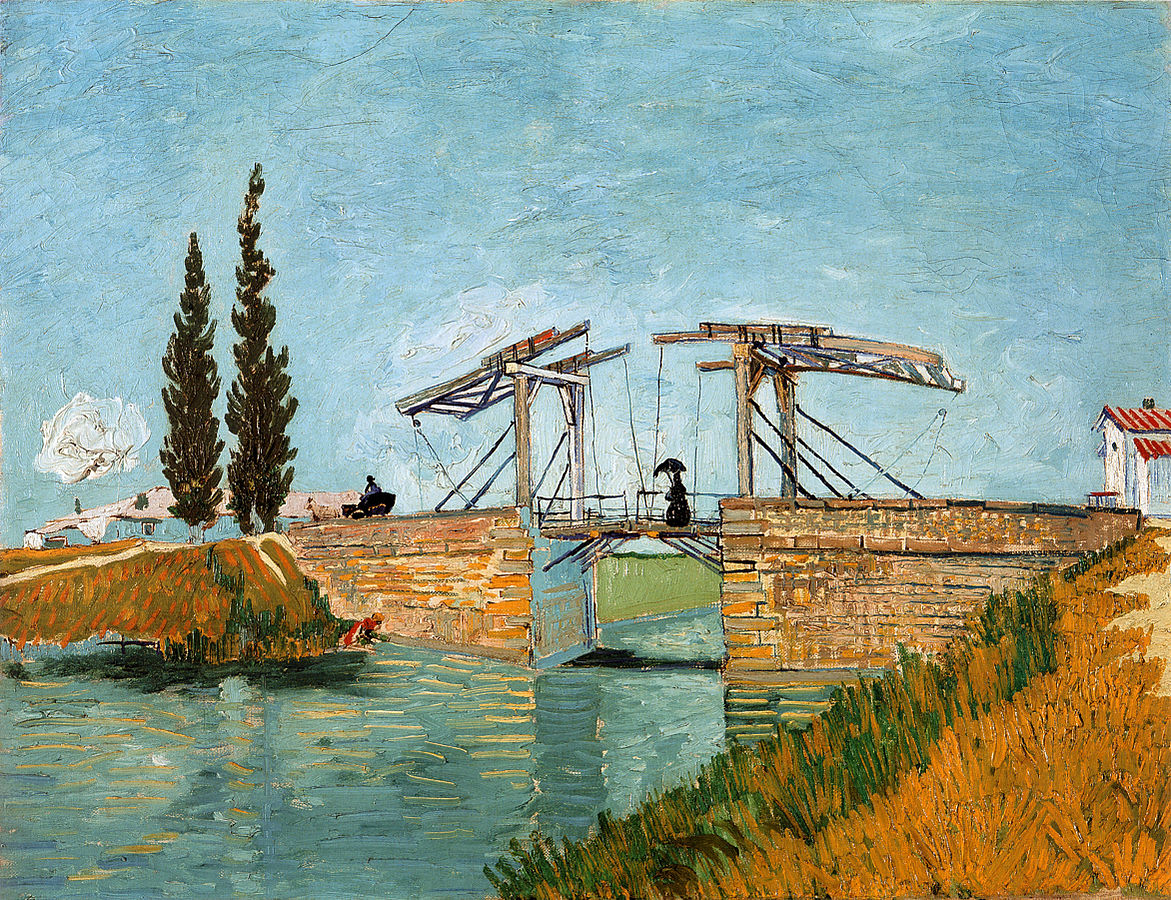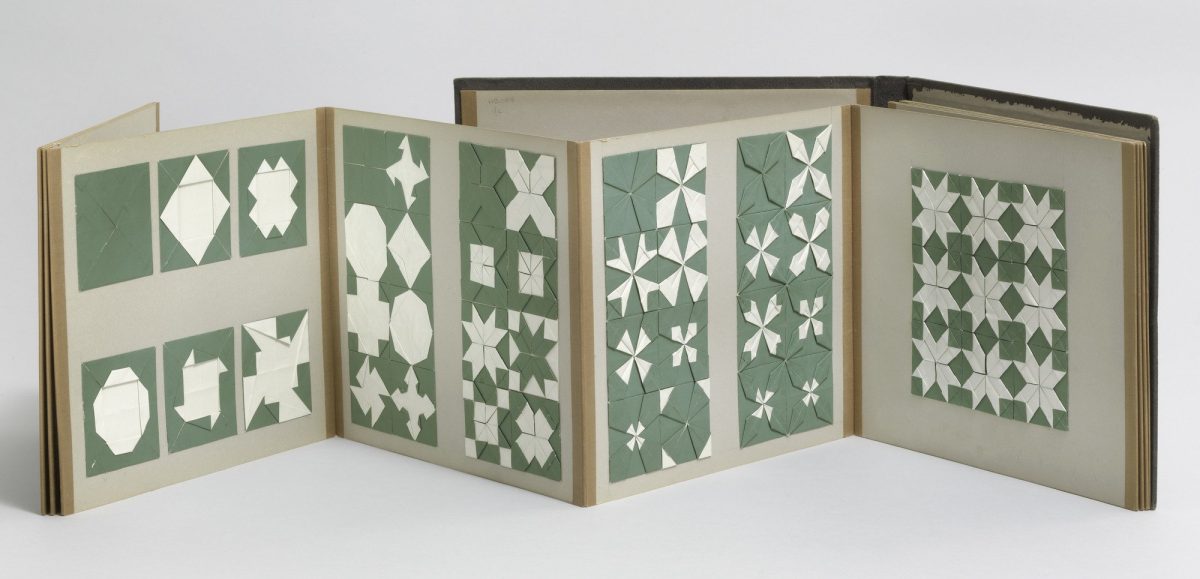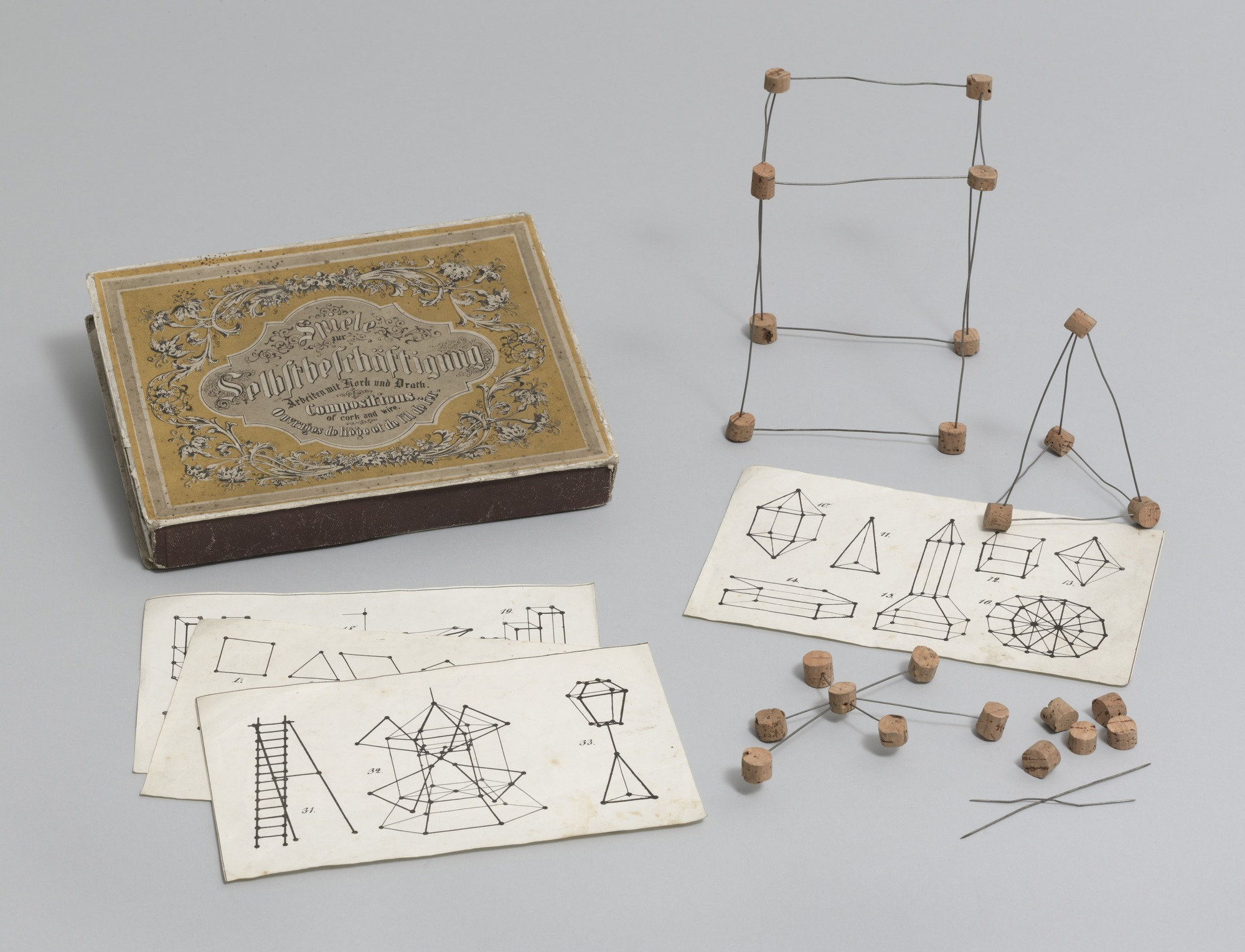The Langlois Bridge at Arles is the subject of four oil paintings, one watercolor and four drawings by Vincent van Gogh. The works, made in 1888 when Van Gogh lived in Arles, in southern France, represent a melding of formal and creative aspects. Van Gogh leverages a perspective frame that he built and used in The Hague to create precise lines and angles when portraying perspective.
Contrasting colors, such as blue and yellow, were used to bring a vibrancy to the works. He painted with an impasto, or thickly applied paint, using color to depict the reflection of light. The subject matter, a drawbridge on a canal, reminded him of his homeland in the Netherlands.
Langlois Bridge at Arles depicts a woman holding an umbrella as she crosses the Langlois Bridge, following a horse and buggy that just crossed the bridge. The water in the canal subtly reflects the bridge and the few clouds in the sky. Van Gogh uses impasto paint and color to reflect light, much as we would see it in with our eye. Two tall cypress trees and a white house flank the drawbridge which has a moveable center section between stone abutments. The painting is currently at the Wallraf-Richartz Museum in Cologne, Germany.
The Museum of Modern Art (MoMA) in New York launched major retrospectives early in the rehabilitation of his reputation, and made large acquisitions.



